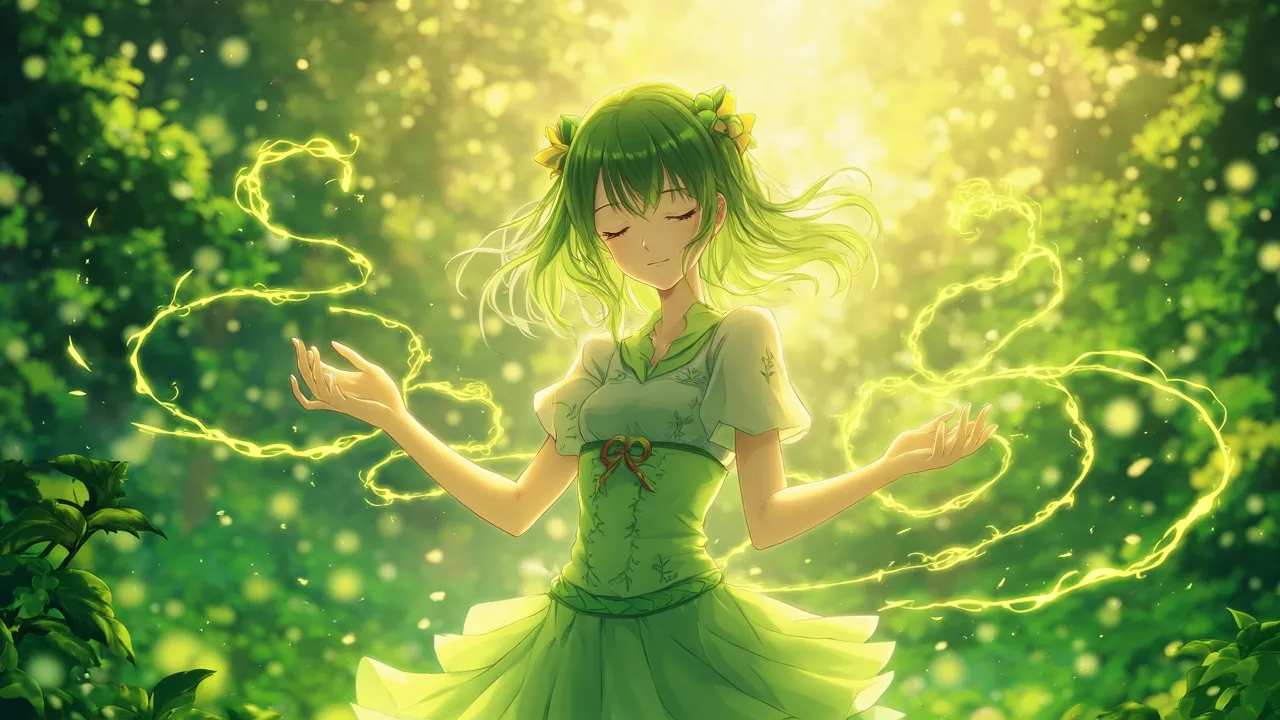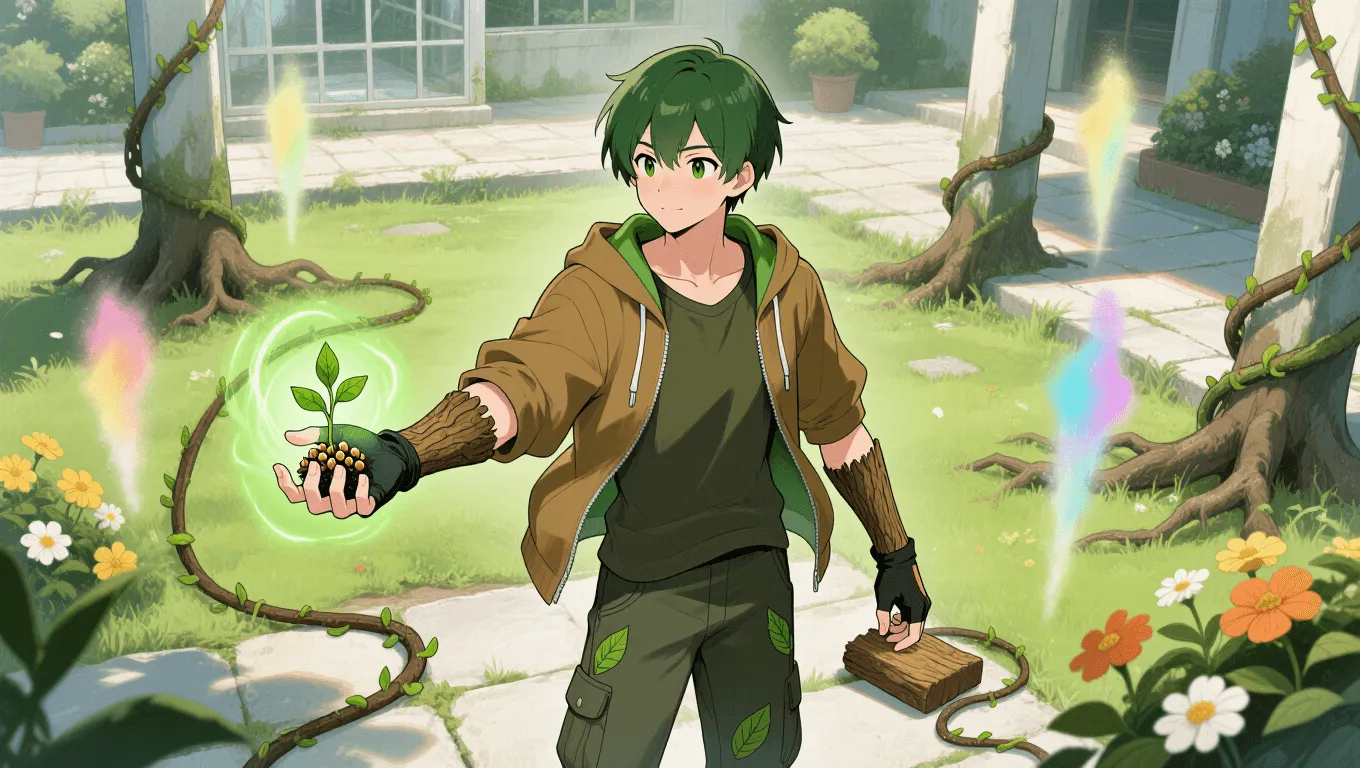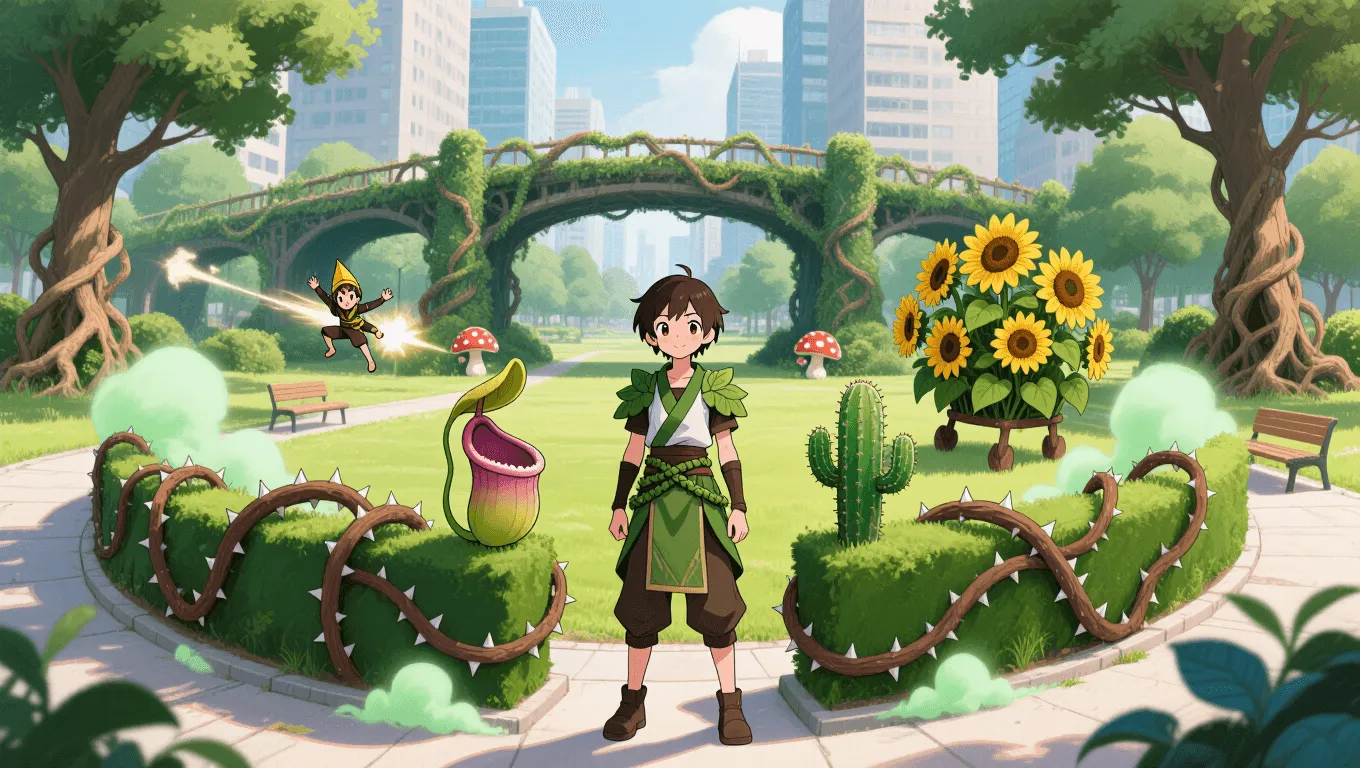Plant Manipulation (Chlorokinesis): The Complete Guide

Plant Manipulation | Chlorokinesis Video Demo 🎬
Table of Contents
- Plant Manipulation | Chlorokinesis Video Demo 🎬
- What Is Plant Manipulation | Chlorokinesis
- Core Abilities of Plant Manipulation | Chlorokinesis
- Application / Tactical Advantages in Combat
- Level: Level 1 🏙️, Level 2 🌇, Level 3 🌃
- Limitations of Using the Plant Manipulation | Chlorokinesis
- Weakness Against What Other Superpowers
- Synergistic Power Combos
- Known Users
Plant Manipulation | Chlorokinesis is the ability to sense, command, and transform plant life at will. In fiction and RPGs, characters with Plant Manipulation (sometimes called chlorokinesis, botanokinesis, or verdokinesis) shape vines into weapons, accelerate growth, harden bark into armor, and even speak through mycelium networks. This guide breaks down what the power is, how it works in combat, its limits, and who wields it best. Explore the complete list of superpowers or try your luck with the random superpower generator.
What Is Plant Manipulation | Chlorokinesis
Plant Manipulation | Chlorokinesis is the focused control of botanical matter—roots, vines, leaves, spores, seeds, sap, and wood—through mental commands or bioenergetic signaling. Practitioners can:
-
Stimulate cellular division to spur growth or budding.
-
Reposition stems, branches, and roots like living tendrils.
-
Alter plant chemistry to produce toxins, pheromones, or medicinal compounds.
-
Interface with ecosystems via root webs and fungal (mycorrhizal) networks.
Unlike “nature manipulation,” which spans weather and terrain, Plant Manipulation specifically targets flora (and often the fungi that network them). It is distinct from general telekinesis because it leverages plant physiology rather than raw force. In settings with “green magic,” the power may be ritualistic; in sci-fi worlds, it can be framed as bio-telemetry or gene-level command.
Core Abilities of Plant Manipulation | Chlorokinesis
Growth Acceleration and Morphogenesis
Users trigger rapid germination, sprouting, and flowering, guiding shapes with precision. Seed pods become grappling hooks; saplings harden into barricades; flowers bloom on command for signals or distractions. Advanced users can remodel lignin and cellulose to adjust hardness, flexibility, and weight.
Motion Control and Plant Telepathy
Through botanical empathy, the wielder compels vines to coil, branches to lower, and roots to tunnel. This isn’t mere puppetry—it feels like a negotiation with living structures. The most skilled can “steer” a forest canopy to open or close and can coordinate multiple species simultaneously.
Chemical Alchemy (Toxins, Scents, and Pheromones)
Chlorokinetics tweak plant biochemistry to exude anesthetics, hallucinogens, or irritants (think pollen storms and capsaicin bursts). Conversely, they can synthesize salves and antitoxins, release calming terpenes for crowd control, or mask scents for stealth.
Mycelium & Root-Network Communication
By riding existing root–fungus superhighways, users extend senses underground. They can eavesdrop on footsteps through soil vibrations, feel where water runs, and “ping” distant plants to relay messages. This network makes the power as much about information as it is about force.
Defensive and Offensive Constructs
-
Vine whips and tendril lariats for mid-range control.
-
Thorn barrages that harden and launch like flechettes.
-
Bramble shields and bark plating for layered protection.
-
Seed grenades that burst into ensnaring nets on impact.
-
Spore veils that obscure vision or induce coughing.
Terrain Shaping (Arbormancy)
At higher tiers, an entire grove can be curled into ramparts, bridges, or living mazes. Roots destabilize enemy fortifications while canopies interlock to create shaded corridors or ambush nests.
Photosynthesis & Bioenergy Modulation
Some settings let users nudge photosynthesis to harvest ambient light, briefly empowering constructs or healing minor plant damage. Rarely, experts convert that bioenergy into kinetic jolts through plant tissues (a “chlorophyllectric” lash).
Symbiosis and Companion Flora
Specialists cultivate loyal plant companions: carnivorous blossoms that guard camps, creeping ivy scouts, or explosive seed-pods. These semi-autonomous allies extend the user’s reach while the user focuses on macro control.
Application / Tactical Advantages in Combat
Area Denial and Crowd Control
Roots erupt into root snares under enemy feet; bramble walls create natural choke points; pollen mists force opponents to don masks or retreat. In tight corridors, creeping vines turn ceilings and floors into hazards.
Stealth, Camouflage, and Recon
Color-shifting foliage cloaks the user; scent-masking flora confuses trackers. Ivy “listens” to vibrations, relaying approximate positions. In forests, they are nearly invisible—a ghost in the understory.
Mobility and Positioning
Living bridges and springy boughs enable silent traversal. Grappling vines swing the user to rooftops or pull foes from vantage points. Tree roots can lift platforms for elevation or cover retreat paths by collapsing behind the user.
Sustainment and Field Medicine
Edible tubers and purified water from succulent tissues keep teams supplied. Medicinal bark and sap reduce bleeding, boost morale through calming aromas, and detoxify mild poisons—valuable in attrition battles.
Environmental Leverage
In wetlands, reeds and mangroves are perfect for ambushes; in deserts, hardy shrubs and cactus water reserves become lifelines; in coastal zones, kelp forests snare submersibles or swimmers. Chlorokinesis shines wherever biomass exists—even potted plants in a corridor are enough for experts.
Level: Level 1 🏙️, Level 2 🌇, Level 3 🌃
Level 1 — Seedling Adept
-
Scope: Small radius (room to courtyard).
-
Feats: Speed up germination; simple vine grabs; coax flowers to bloom; minor scent tweaks; basic bark plating on forearms.
-
Tactics: Ambush single targets, slow pursuers with ankle-high roots, set trip-vine traps.
-
Limiters: Needs existing plants or seeds; growth bursts drain stamina; weak in barren interiors.

Level 2 — Grove Warden
-
Scope: Neighborhood park or city block with landscaping.
-
Feats: Multi-plant coordination; sturdy bramble walls; targeted toxin release (nonlethal irritants); mycelium sensing across streets; rapid morphogenesis for bridges and shields.
-
Tactics: Shape terrain mid-fight, partition battlefields, combine snare→thorn volley chains, maintain a small cadre of companion plants.
-
Limiters: Concentration split across constructs; heat and drought reduce reliability; anti-plant agents partially neutralize growth spurts.

Level 3 — Verdant Sovereign
-
Scope: Ecosystem scale—forests, mangroves, kelp beds.
-
Feats: Ecosystem orchestration; wood density and elasticity control; precise biochemical cocktails; long-range messaging through root webs; temporary “awakening” of vegetation for semi-autonomous defense.
-
Tactics: Encircle armies with living fortifications, tunnel roots under walls, flood zones with fast-growing canopy. Can fight a war of logistics—denying resources while sustaining allies.
-
Limiters: Massive bioenergetic cost; ethical risks to habitats; vulnerability to wildfire, frost, and sterilizing agents; prolonged use may cause ecological imbalance without care.

Limitations of Using the Plant Manipulation | Chlorokinesis
-
Resource Dependence: Flora need light, water, nutrients, and time. In sterile, sealed, or scorched environments, there is little to work with unless seeds or spores are carried in.
-
Seasonality and Climate: Cold snaps, droughts, or nutrient-poor soils suppress responsiveness.
-
Counter-Agents: Herbicides, desiccants, saltwater oversaturation (in non-halophytic plants), fungicides (for mycelium networks), and defoliants undermine constructs.
-
Fire & Ice Risks: Heat can spark uncontrollable fires; intense cold makes tissues brittle.
-
Ethical/Ecological Cost: Over-harvesting or forced growth can damage ecosystems, angering local spirits or guardians in mythic settings.
-
Cognitive Load: Managing many moving, living parts taxes focus; distractions can collapse constructs.
-
Built Environments: Reinforced concrete and steel reduce leverage; ornamental plants help, but scale is limited indoors without preparation.
Weakness Against What Other Superpowers
-
Pyrokinesis: Ignites dry biomass, creates firebreaks that sever networks, and produces smoke that disrupts vision and breathing.
-
Cryokinesis: Freezes sap and intracellular water, making foliage fragile and easy to shatter.
-
Aerokinesis: Desiccates tissues with hot, dry winds; scatters spores and seeds off-target; collapses pollen-based tactics.
-
Electrokinesis: Lightning surges can spark wildfires or carbonize plant constructs.
-
Acid/Toxikinesis: Corrodes cellulose and lignin, dissolving barriers and armor.
-
Sonokinesis: Resonant vibrations rupture cell walls and shred leaves.
-
Shadow/Darkness Manipulation: Starves photosynthesis and hinders growth-based powers.
-
Technopathy/Technomancy: Deploys drones, saws, and mechanized harvesters to neutralize living fortifications.
-
Necromancy/Decay: Accelerates rot, turning barriers into mulch; undermines mycelium relays.
-
Severing Telekinesis: Cleanly slices vines and roots, bypassing entanglement.
Synergistic Power Combos
-
Hydrokinesis + Chlorokinesis: Water routing boosts turgor pressure and growth; enables underwater kelp traps and floating reed bridges.
-
Terrakinesis + Chlorokinesis: Soil aeration, mineral enrichment, and rapid rooting produce instant forests or root bunkers.
-
Aerokinesis + Chlorokinesis: Directs pollen storms, spreads medicinal aerosols, and cools canopies; wind-lifted seed grenades extend range.
-
Light Manipulation + Chlorokinesis: Artificial “sun” for photosynthesis in caves or at night; laser-guided growth for precise constructs.
-
Biokinesis/Healing + Chlorokinesis: Fine-tunes plant immunity and repair; enables symbiotic armor that self-heals.
-
Animal Empathy/Entomokinesis + Chlorokinesis: Coordinates pollinators and guardian insects with vine sentries for complex eco-traps.
-
Weather Control + Chlorokinesis: Summoned rain ends drought penalties; fog amplifies stealth; lightning (carefully directed) can harden wood via flash-curing.
-
Seismokinesis + Chlorokinesis: Quakes fracture pavements for roots to burst through, creating instant barricades.
Known Users
-
Poison Ivy (Pamela Isley) — DC’s eco-terrorist/eco-activist famous for botanical control, pheromones, and living armor. Learn more about her powers and history on her character page.
-
Swamp Thing — A guardian of the Green, embodying plant life and elemental ecology.
-
Groot — A sentient tree-like hero capable of regeneration, shaping limbs, and rapid growth.
-
Black Tom Cassidy — Channels energy through plant life, manipulating wood and vines offensively.
-
Floronic Man (Jason Woodrue) — A botanist-turned-plant entity with deep chlorokinetic expertise.
-
Krakoa — A sentient island whose entire body is an ecosystem and fortress.
-
Hollow/Plant-Masters (various RPG archetypes) — Druidic PCs/NPCs that specialize in vines, spores, and herbal alchemy.
By mastering Plant Manipulation | Chlorokinesis, a character becomes a strategist of living terrain—turning landscapes into allies, logistics into weapons, and every seed into a choice. For more powers to combine with chlorokinesis, browse the superpowers listing or roll the dice on the random superpower generator.
